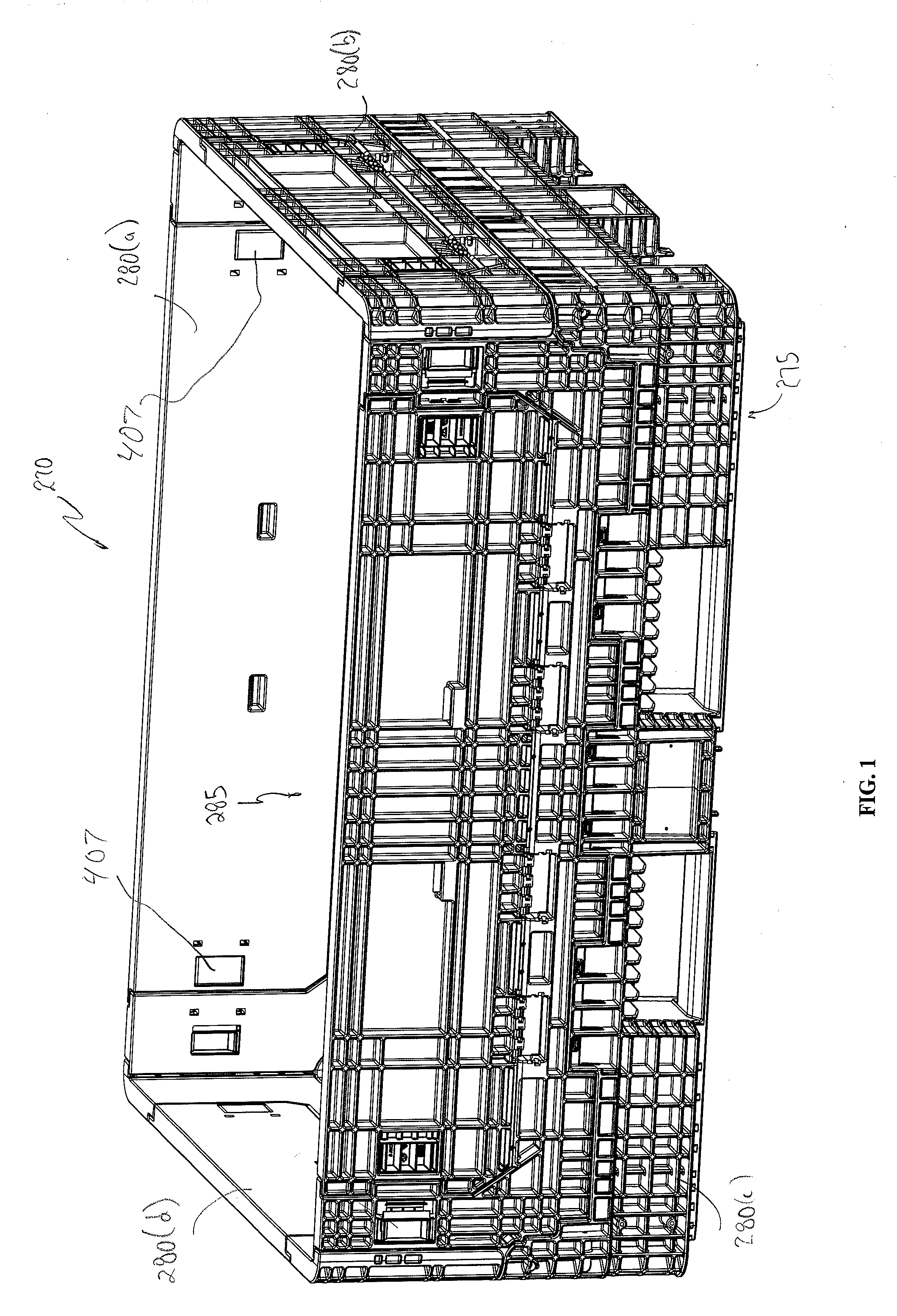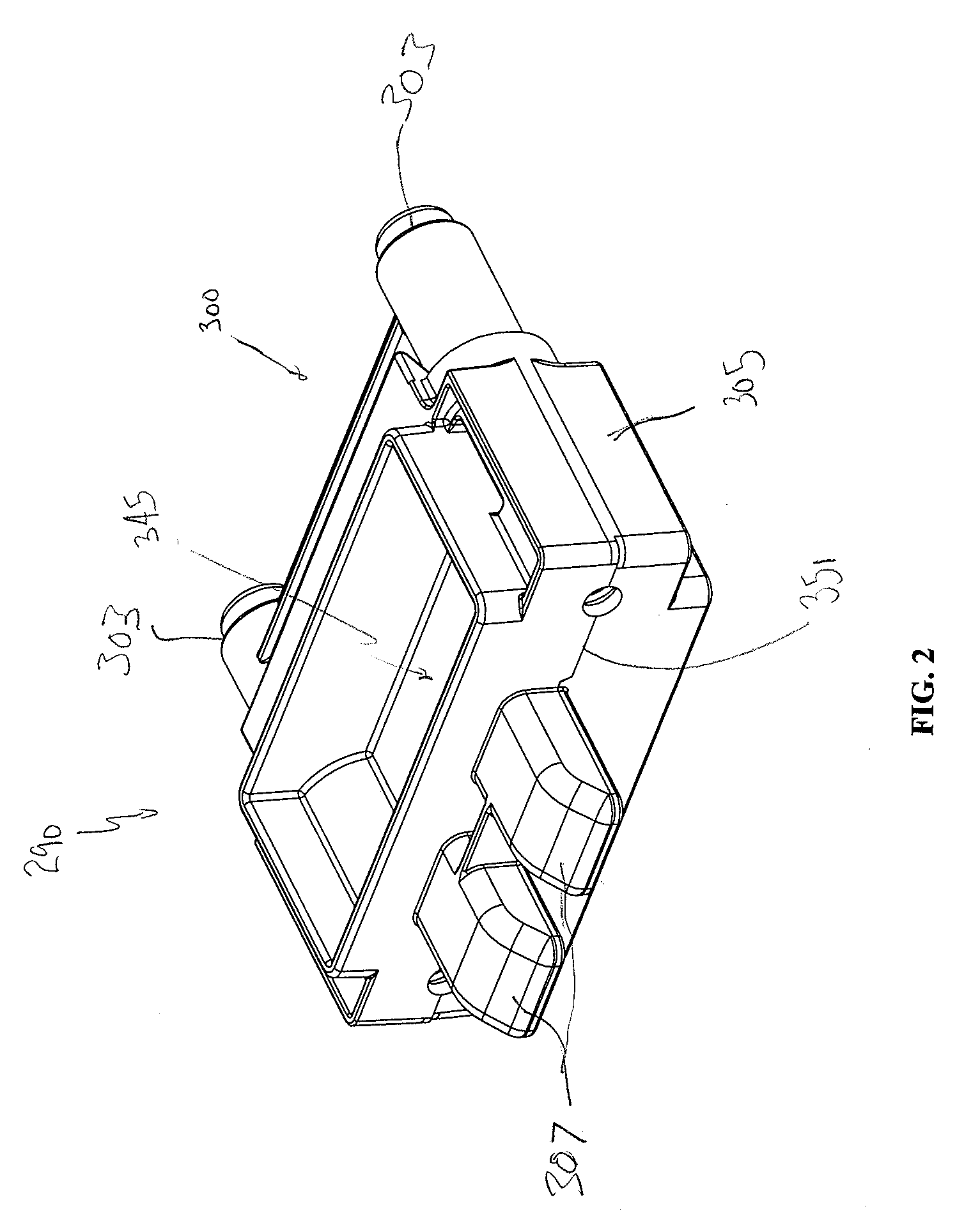Container assembly and latch apparatus, and related methods
a technology of latches and containers, applied in the field of container assembly and latches, can solve the problems of insufficient or secure engagement between the two adjacent parts, the latches used in many prior art containers are susceptible to improper insertion or orientation within the sidewall and/or drop door panel, and the risk of damage to the container, or to people and/or property around or in the container, so as to reduce the number of molds, easy to remove and replace/repair, and easy to inser
- Summary
- Abstract
- Description
- Claims
- Application Information
AI Technical Summary
Benefits of technology
Problems solved by technology
Method used
Image
Examples
Embodiment Construction
[0038]Persons of ordinary skill in the art will understand that the components discussed herein can be fabricated from any of a wide variety of materials and processes. Preferably, the components are lightweight but suitably strong to withstand the loads and forces they may encounter during use. Among others, high / low pressure plastic injection molding, structural foam molding, or blow-molding can be readily utilized to form lightweight components or structures embodying the invention, for storage, transport, and handling of a wide variety of solid and liquid materials and things. Other fabrication methods include, by way of example, compression molding, rotational molding, gas / water assist molding, extrusion, or pultrusion.
[0039]For certain of the components described herein, materials such as nylon may be preferable (for certain latch and plug components), while alloy steel may be useful for other latch embodiments. Persons of ordinary skill in the art will understand that other m...
PUM
| Property | Measurement | Unit |
|---|---|---|
| compressive forces | aaaaa | aaaaa |
| force | aaaaa | aaaaa |
| forces | aaaaa | aaaaa |
Abstract
Description
Claims
Application Information
 Login to View More
Login to View More - R&D
- Intellectual Property
- Life Sciences
- Materials
- Tech Scout
- Unparalleled Data Quality
- Higher Quality Content
- 60% Fewer Hallucinations
Browse by: Latest US Patents, China's latest patents, Technical Efficacy Thesaurus, Application Domain, Technology Topic, Popular Technical Reports.
© 2025 PatSnap. All rights reserved.Legal|Privacy policy|Modern Slavery Act Transparency Statement|Sitemap|About US| Contact US: help@patsnap.com



